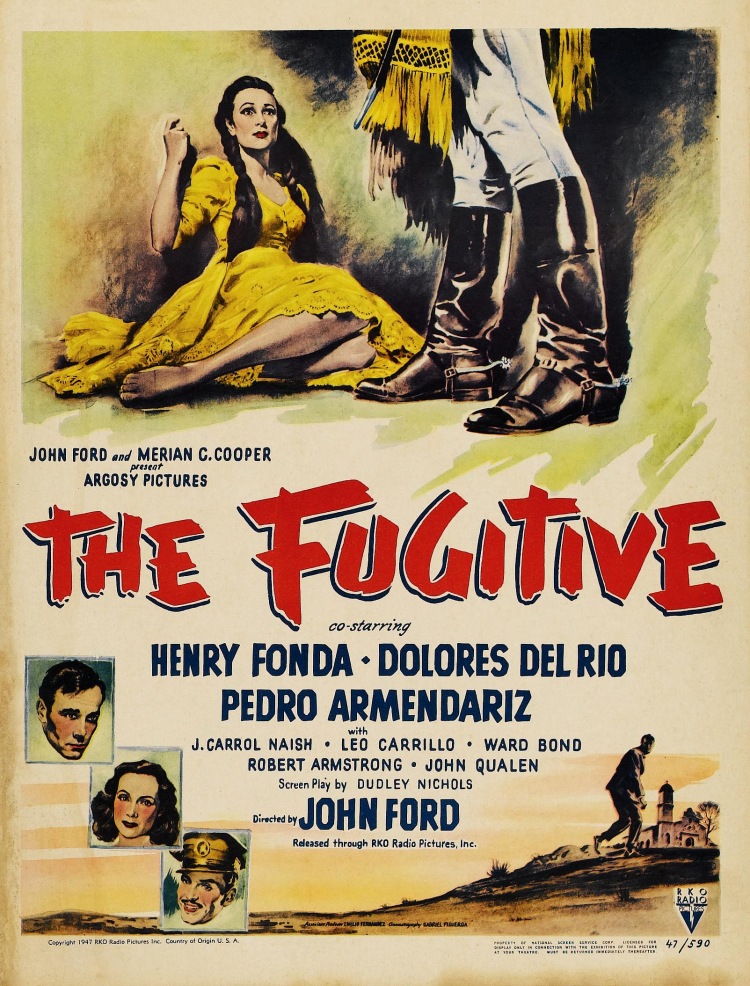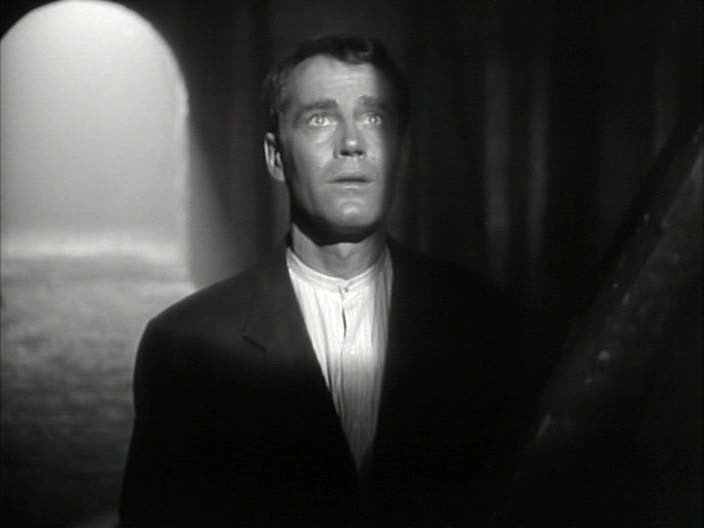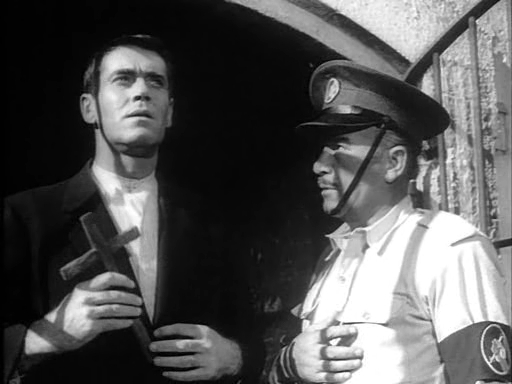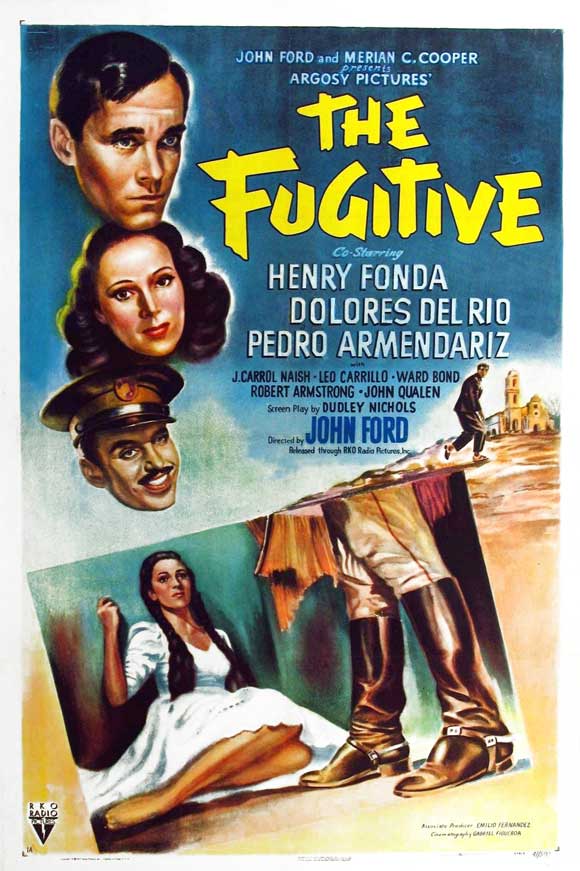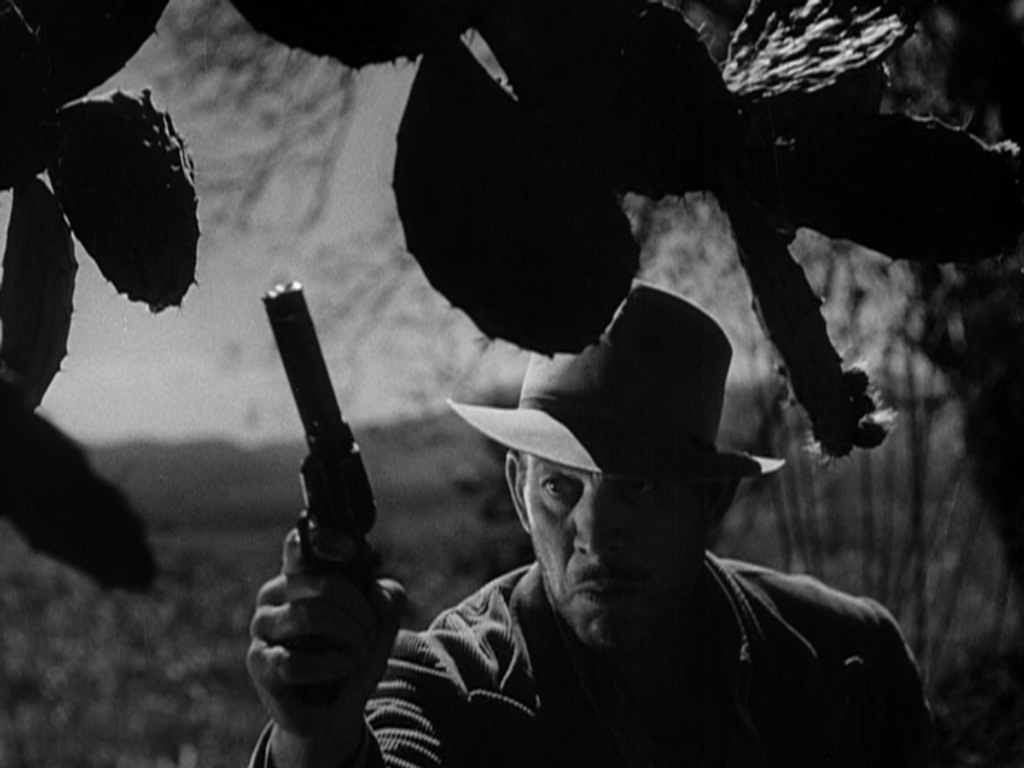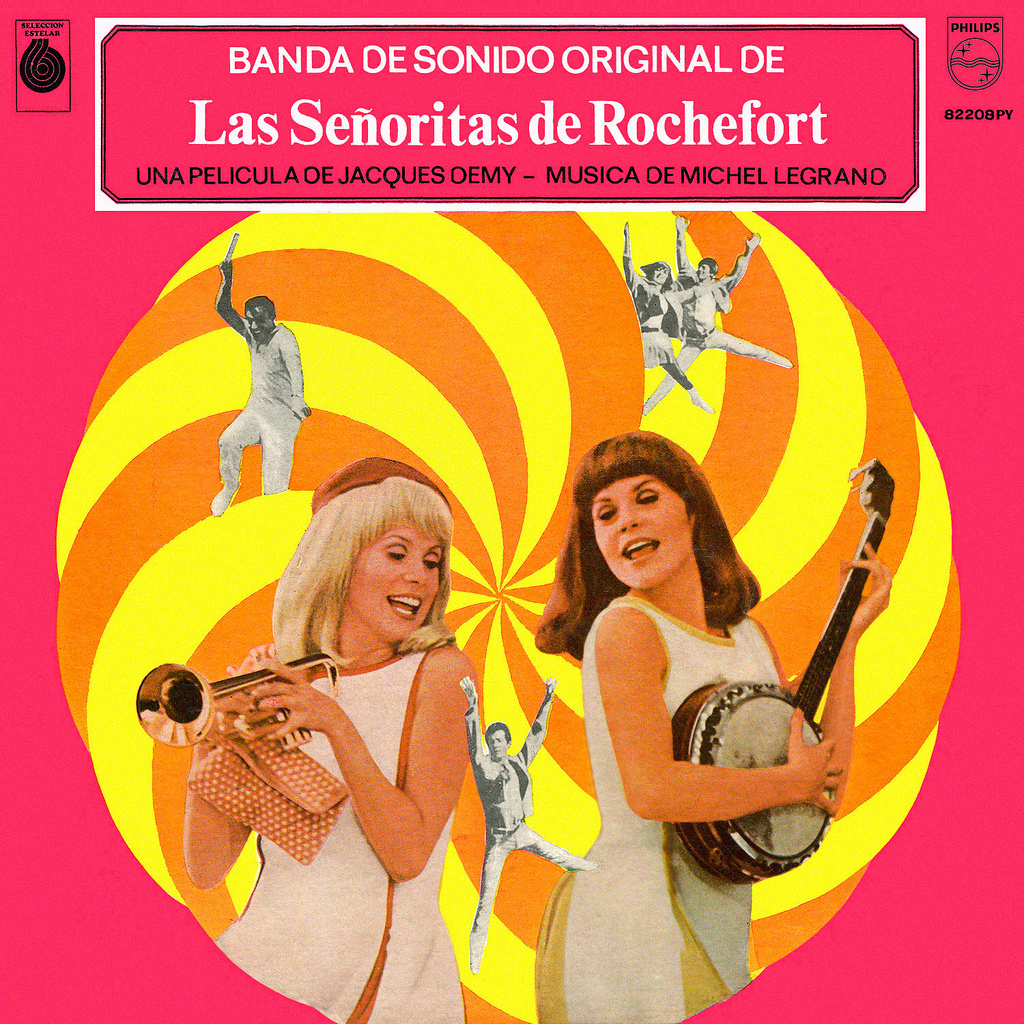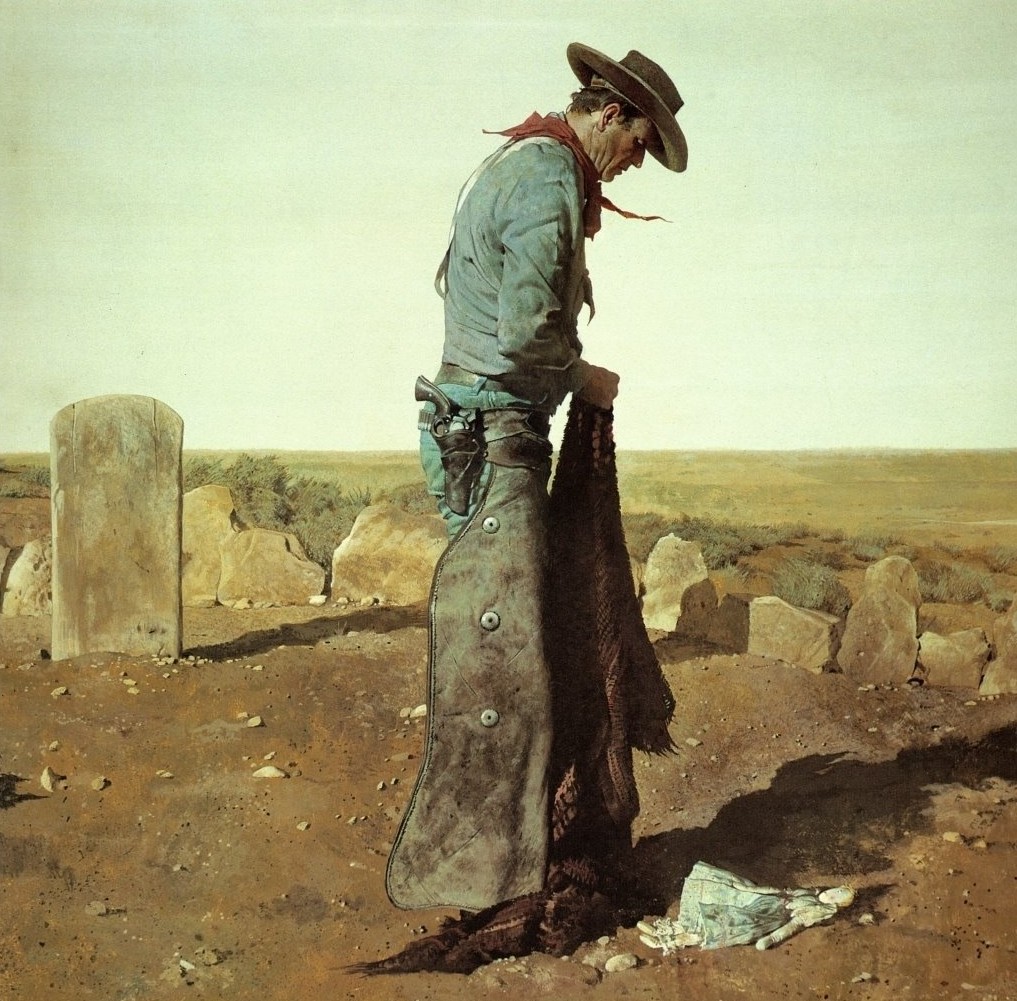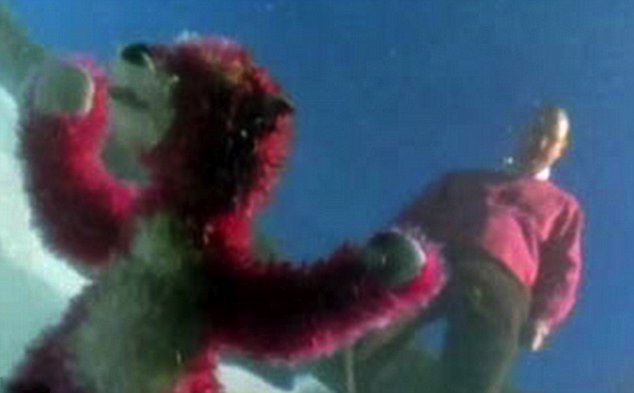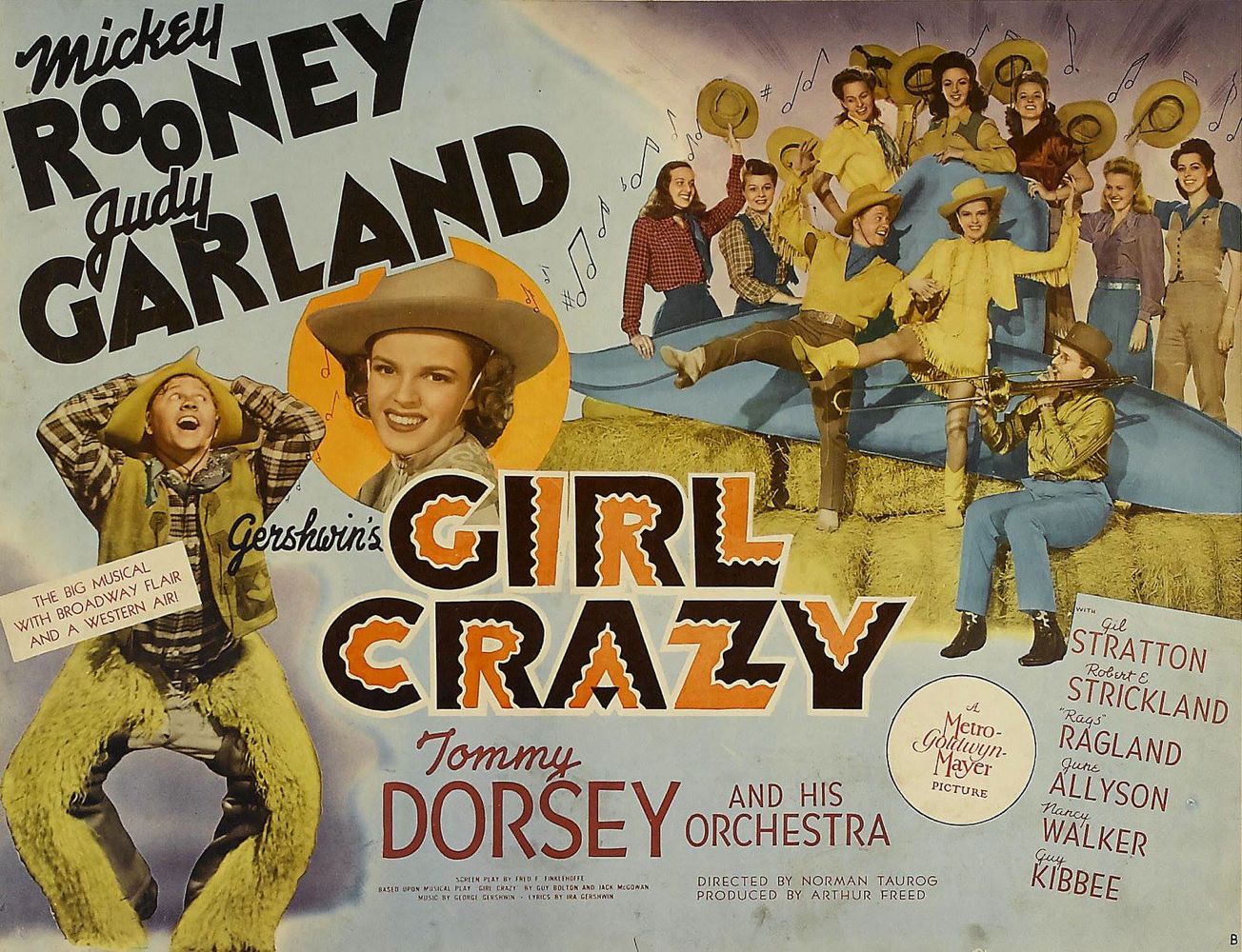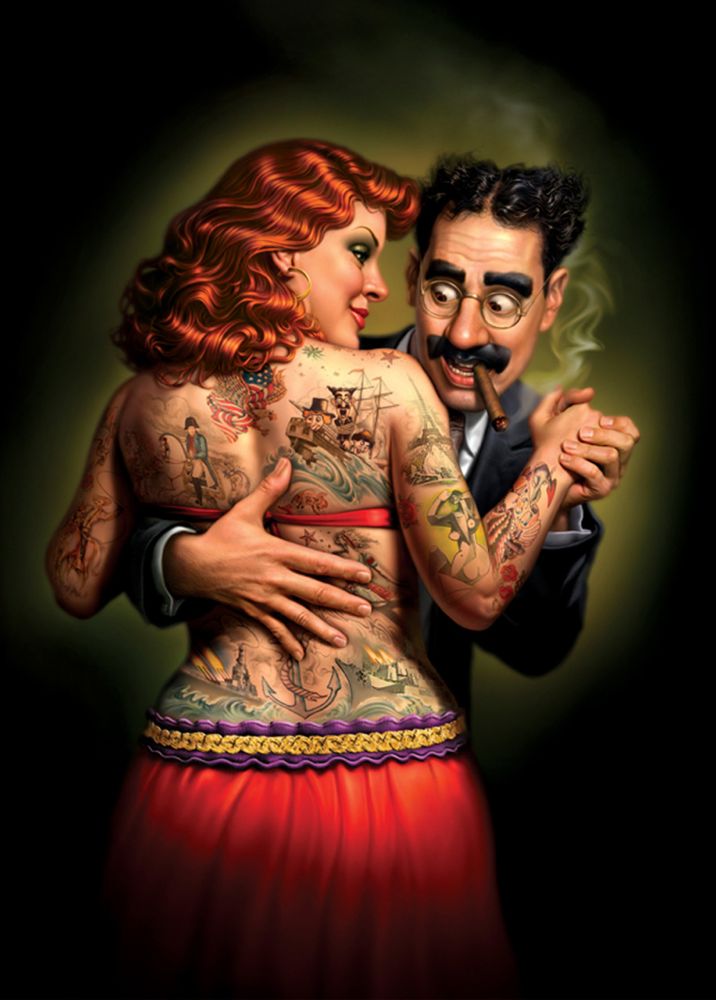Category Archives: Movies
THE FUGITIVE (1947)
Visually, shot for shot, this one of John Ford’s most beautiful films. The cinematography of Gabriel Figueroa is consistently amazing.
The film itself is both suspenseful and deeply moving, a rare feat indeed for a work which is so overtly religious. All of Ford’s films are religious, though rarely overtly so, because he was essentially a religious artist — service, sacrifice, forgiveness and redemption were his perennial themes. But he was wise enough to disguise these themes through indirection. Overtly religious themes make people nervous.
There’s something defiant in The Fugitive — an insistence on calling a spade a spade, spiritually speaking. You get a sense that Ford identified intimately with the film’s protagonist, a priest in a nameless country where religion has been outlawed, a man hunted, persecuted and eventually executed for his beliefs.
The film was a total flop commercially, and doesn’t hold a high place in the critical canon of Ford’s work. It was perhaps a self-fulfilling prophecy — Ford saying, “If I tell you what my films are really about, you’ll hate them.” Point taken. If you want to love Ford’s work while ignoring its religious content, you don’t really love Ford’s work at its thematic core.
Sadly, Ford tried to hedge his bets with The Fugitive, supplying it with a truly terrible score, which tries to inflate its simple, fable-like narrative with trite, overblown cues that in fact undermine its radical simplicity. The score tries to sell us a conventional suspense melodrama which bears no resemblance to the film Ford made, a flawed masterpiece, but a masterpiece all the same, and a very courageous one.
A MOVIE LOBBY CARD FOR TODAY
BY THE NUMBERS
THE PEANUT VENDOR
NO LONGER TRYING
A beautiful, spooky music video made by Jae Song . . .
IT’S SUCH A PRETTY WORLD TODAY
MY DREAM HOME AWAY FROM HOME
AN LP COVER FOR TODAY
DEBBIE’S DOLL
Click on the image to enlarge.
In this wonderful painting by Robert McGinnis, a tribute to John Ford’s film The Searchers, Ethan Edwards looks down at the doll which Debbie, his niece, dropped when she was abducted by Scar — a symbol of innocence violated.
I believe that the teddy bear which falls into Walter White’s pool in Breaking Bad, from the mid-air collision of two aircraft, is a reference to Debbie’s doll, a similar image of innocence violated, for which Walt is indirectly but inescapably responsible.
Vince Gilligan, the creator of Breaking Bad, said that the ending of the series was a direct nod to The Searchers — offering Walt, like Ethan, a small measure of redemption. In Breaking Bad, Walt is thus both Ethan and Scar, just as the two are in one sense mirrors of each other in The Searchers, two sides of what is in truth the same savagery.
A MOVIE MUSICAL POSTER FOR TODAY
LYDIA, OH LYDIA!
NINE YEARS
YOU’RE MOVIN’ ME
MANGO WALK

